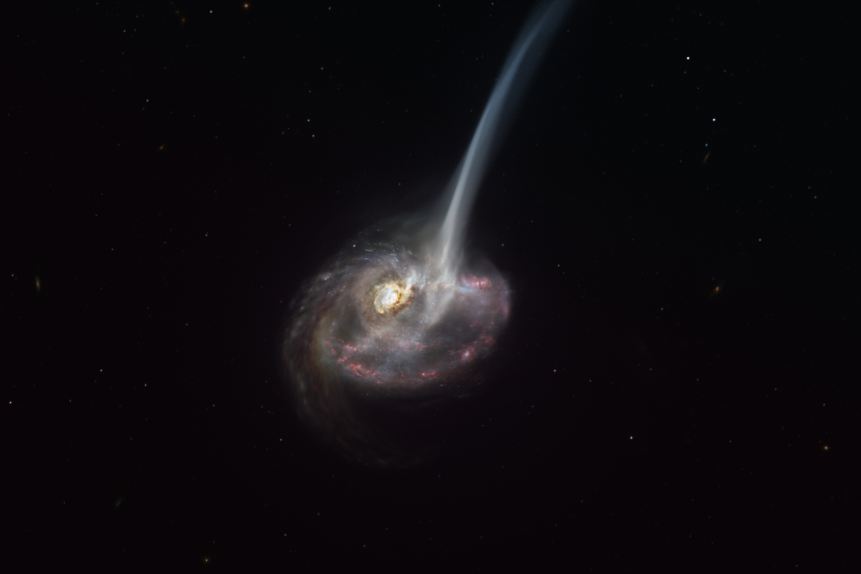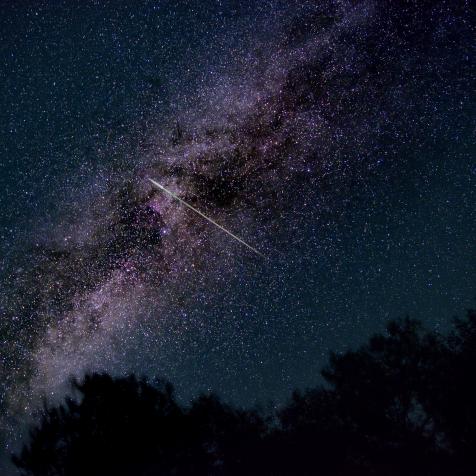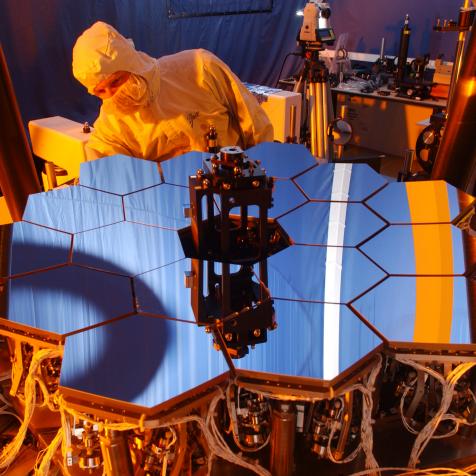
MARK GARLICK/SPL
A Eulogy for a Galaxy

ID2299, a galaxy 13.8 billion light years away, died far too young.
The galaxy ID299–known affectionally to many as “Idee” – passed away when the universe was only 4.5 billion years old, a mere third of its present age. Idee should have been among the great galaxies to inhabit the present-day universe, but fate intervened in the form of another massive galaxy, which crashed into Idee, and deprived it of all its star-forming material.
But we come together today to celebrate the life that Idee lived and remark on its accomplishments. According to the latest observations taken with the Atacama Large Millimeter-Submillimeter Array (ALMA, perhaps the most powerful telescope currently in operation on Earth), Idee is currently ejecting over 10,000 suns worth of material every single year.
It has already lost nearly half of its molecular gas, the crucial ingredient needed to make new stars.
Astronomers suspect that Idee suffered a fatal accident. Most galaxies in our universe are racing away from each other, carried by the ceaseless invisible currents of the expansion of the cosmos. But occasionally they get too close and become gravitationally attracted, and, over the course of hundreds of millions of years, collide.
Galaxy collisions are some of the most violent, energetic events to occur in the universe, and they rarely turn out well for their participants, including Idee.
The amount of gravitational forces unleashed during a galaxy collision is almost unfathomable. They can literally tear a galaxy apart, raising so-called “tidal tails”, which are long streams of gas and stars that get flung out of a galaxy during the collision. The physics behind it is the same physics that explains the tides on the Earth, hence the name. When a galaxy gets too close to another, the side nearest the approaching interloper experiences an extra-strong gravitational tug. But on the opposite side, the lack of gravity causes bits to float away.

ESO/M. Kornmesser
This artist’s impression of ID2299 shows the galaxy, the product of a galactic collision, and some of its gas being ejected by a “tidal tail” as a result of the merger. New observations made with ALMA, in which ESO is a partner, have captured the earliest stages of this ejection, before the gas reached the very large scales depicted in this artist’s impression
The moon raises tides on opposite sides of the Earth, and a massive galaxy can stretch and distort another.
Such a fate seems to have befallen unfortunate Idee.
Galaxies are full to the brim with gas, but most of it is unusable for making stars. To manufacture a sun, you need to compress a lot of material into a very small enough tight enough to trigger nuclear fusion. And in order to compress gas into a small volume, you need to make it cold. If the gas is too hot, it just spends all its time flying around without ever settling down.
That’s why what’s happening to ID2299 is so alarming. The tidal disruption event it suffered during its encounter with the neighboring galaxy ripped away its own star-forming gas and sent it flying into intergalactic space. Idee is especially losing the cool component of its material, which is exactly what it needs to make stars. Soon enough, star formation in that galaxy will completely shut down. It will still shine for billions of years more, but that will be from the light of already-formed stars, not new ones.
Over time, Idee will entirely fade from the cosmic scene.
Idee will be missed.



















